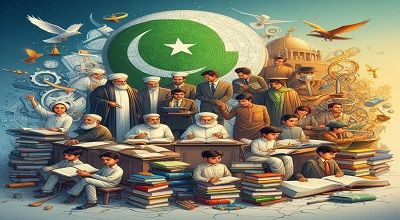Education Policy Changed In Pakistan
Now Guys I am sharing the Education Policy Changed In Pakistan (Latest). Here is some information about the education policy changes in Pakistan. Here are some key points from the web search results:
- The government of Pakistan has announced a plan to introduce a uniform education system across the country at different stages, starting from the academic year 2021.
- The uniform education system aims to eliminate the disparities and inequalities among different types of schools, such as public, private, and madrassas.
- The new education policy also focuses on improving the quality and accessibility of education, especially for girls and disadvantaged children, by increasing the budget, upgrading the infrastructure, and revising the curriculum.
What is the current literacy rate in Pakistan?
According to the web search results, the current literacy rate in Pakistan is around 58% for the year 2019. This means that 58% of the population aged 15 and above can read and write a simple statement. However, there is a significant gap between the literacy rates of males and females. The male literacy rate is about 72.5%, while the female literacy rate is only 51.8%. This shows that women’s education needs more attention and improvement in Pakistan.
What are some reasons for the low literacy rate in Pakistan?
Some of the reasons for the low literacy rate in Pakistan are:
- Poverty: Many people in Pakistan are poor and cannot afford to send their children to school or buy them books and uniforms.
- Parental illiteracy: Many parents in Pakistan are illiterate themselves and do not value education or encourage their children to study.
- Lack of educational facilities: There is a shortage of schools, teachers, classrooms, and learning materials in many areas of Pakistan, especially in rural and remote regions.
- Social and cultural disputes: Some social and cultural norms and practices in Pakistan hinder the access and participation of children, especially girls, in education. For example, some tribes and traditions do not allow their children to go to school or mix with other children.
- Unemployment: Many people in Pakistan do not see the benefits of education in terms of employment opportunities and income. They prefer to engage their children in labor or domestic work rather than sending them to school.
- Traditional teaching methods: Many schools in Pakistan use outdated and ineffective teaching methods that do not motivate or inspire the students to learn. They rely on rote memorization and corporal punishment rather than interactive and creative learning.
- Traditional government policies: The government of Pakistan has not given enough priority and resources to the education sector. The budget for education is low, the curriculum is not revised, and the monitoring and evaluation system is weak.
Summary
However, the implementation of the new education policy faces many challenges. Such as resistance from some stakeholders, lack of coordination among different levels of government, and insufficient monitoring and evaluation mechanisms.
These are some of the main reasons for the Low Literacy Rate in Pakistan. To improve the situation, there is a need for more awareness, investment, reform, and innovation in the education sector. I hope this answer helps you understand the issue better. If you have any other questions, please feel free to ask me.
